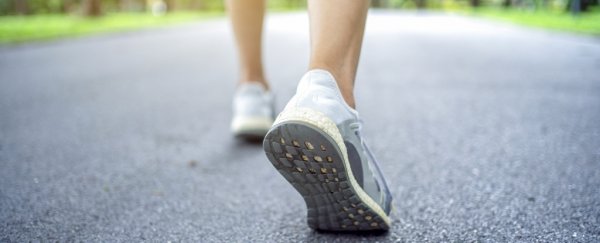A fitness trend known as Japanese walking is capturing attention online, promising major health benefits with minimal equipment and time.
Based on interval-style bursts of fast and slow walking, Japanese walking was developed by Professor Hiroshi Nose and Associate Professor Shizue Masuki at Shinshu University in Matsumoto, Japan.
It involves alternating between three minutes of walking at a higher intensity and three minutes at a lower intensity, repeated for at least 30 minutes, four times per week.
The higher-intensity walking should be done at a level that is "somewhat hard". At this level, it is still possible to talk, but holding a full conversation would be more difficult.

The lower-intensity walking should be done at a level that is "light". At this level, talking should be comfortable, though a little more laboured than an effortless conversation.
Japanese walking has been likened to high-intensity interval training or Hiit, and has been referred to as "high-intensity walking", although it is less taxing than true Hiit and is performed at lower intensities.
It is also easy to perform and requires only a stopwatch and space for walking. It requires little planning and is less time-consuming than other walking targets, such as achieving 10,000 steps a day. This makes it suitable for most people.
What does the evidence show?
Japanese walking offers significant health benefits. A 2007 study from Japan compared this method to lower-intensity continuous walking, with a goal of achieving 8,000 steps per day.
Participants who followed the Japanese walking approach experienced notable reductions in body weight. Blood pressure also dropped – more so than in those following the lower-intensity continuous walking routine.
Leg strength and physical fitness were also measured in this study. Both improved to a greater extent in those following the Japanese walking programme, compared to those completing moderate-intensity continuous walking.
A longer-term study also found that Japanese walking protects against the reductions in strength and fitness that happen with ageing.
These improvements in health would also suggest that Japanese walking can help people live longer, though this has not yet been directly studied.
There are a few things to consider with this new walking trend. In the 2007 study, around 22% of people did not complete the Japanese walking programme. For the lower intensity programme, with a target of 8,000 steps per day, around 17% did not complete it.
This means that Japanese walking may not be suitable for everyone, and it might not be any easier or more attractive than simple step-based targets.
Achieving a certain number of steps per day has also been shown to help people live longer. For those aged 60 and older, the target should be around 6,000 to 8,000 steps a day and 8,000 to 10,000 for those aged under 60. Similar evidence does not appear to exist for Japanese walking… yet.
So is this walking trend really the be-all and end-all? Or does it matter less about what exercise you do and more about how often and how hard you do it? The answer is likely to be the latter.
Research tells us that people who regularly perform more bouts of moderate to vigorous physical activity live longer, regardless of how long each bout is.
This means that we should focus on ensuring we perform regular moderate to vigorous physical activity and make it habitual. If that activity happens to be Japanese walking, then it's a worthwhile choice.![]()
Sean Pymer, Academic Clinical Exercise Physiologist, University of Hull
This article is republished from The Conversation under a Creative Commons license. Read the original article.
